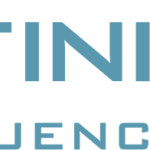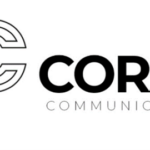 When Ryan McFadyen and Jason Stewart co-founded HaveYouHeard 10 years ago, influencer marketing in South Africa had yet to raise its hand as a new marketing tool. When it did, about five years after, their learning trajectory was steep, but fast, and today their expertise in the influencer marketing arena is acknowledged by global brands (and clients) such as Jeep, PanzerGlass and Martell and local institutions such as Old Mutual and the Foschini group alike. Here McFadyen, who is the agency’s strategic head, outlines his vision of influencer marketing best practice.
When Ryan McFadyen and Jason Stewart co-founded HaveYouHeard 10 years ago, influencer marketing in South Africa had yet to raise its hand as a new marketing tool. When it did, about five years after, their learning trajectory was steep, but fast, and today their expertise in the influencer marketing arena is acknowledged by global brands (and clients) such as Jeep, PanzerGlass and Martell and local institutions such as Old Mutual and the Foschini group alike. Here McFadyen, who is the agency’s strategic head, outlines his vision of influencer marketing best practice.
- Integrated thinking is key:
Don’t treat influencer marketing as a tactic or inconsequential add-on to a campaign. What works today is integrated thinking and integrated execution. Use influencer marketing with purpose and based on insight so that it can add value to the over-arching campaign.
- Drop the one-size-fits-all mentality:
Influencer marketing succeeds in myriad ways for myriad reasons. As complex and varied as our personal human relationships are, so too are the relationships we have with influencers.
- Identify the right influencer:
It almost goes without saying that identifying the right influencer is key. Even more important is knowing how reliable they are when it comes to output, how ‘safe’ they are for the brand and where they are in their own product life cycle – are they growing in influence, stable or declining?
- Always profile the audience:
We engage an influencer because of the influence she or he has over others. Who those others are is paramount to the success of the campaign because it informs the idea, the tone, the treatment and the mechanics.
- Unpack and clarify the ‘why’:
Understanding why you have opted to utilise influencer marketing is vital because this has a direct impact on his or her role and output. For example, if the ‘why’ is to drive sales, the influencer’s outputs would be markedly different to those if the objective is to build awareness. Consider the influencer’s role and output for the following as a start; you may add others as you spend more time using influence marketing:
- awareness (know about something to tell others about)
- attendance (be somewhere to get people somewhere)
- creation (create or co-create a form of content, experience, product or brand)
- credibility (change brand perception or build brand equity)
- endorsement (advocate, align, become an ambassador)
- sales (drive direct purchase)
- Understand reach and how to measure it:
While reach has become a generic term for awareness, it specifically speaks to the volume, depth or distance that any of the above objectives achieve. How much awareness is created? How much credibility is spread? How many sales are achieved? The metrics used to measure these include EMV, impressions, mentions, share of voice, engagement, CPM, CPE, sales figures, attendance etc. These should always be linked back to the objectives of the campaign.
- MRF Unveils Latest MAPS® Data - 20th February 2025
- The BRC announces changes to the board and updates for 2025 - 17th December 2024
- Top 50 DSTV TV programmes – October 2024 - 12th November 2024





